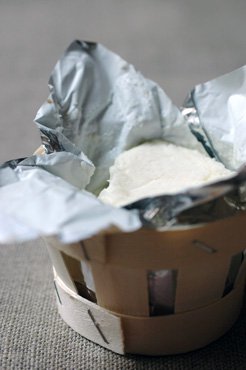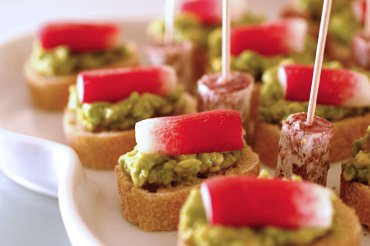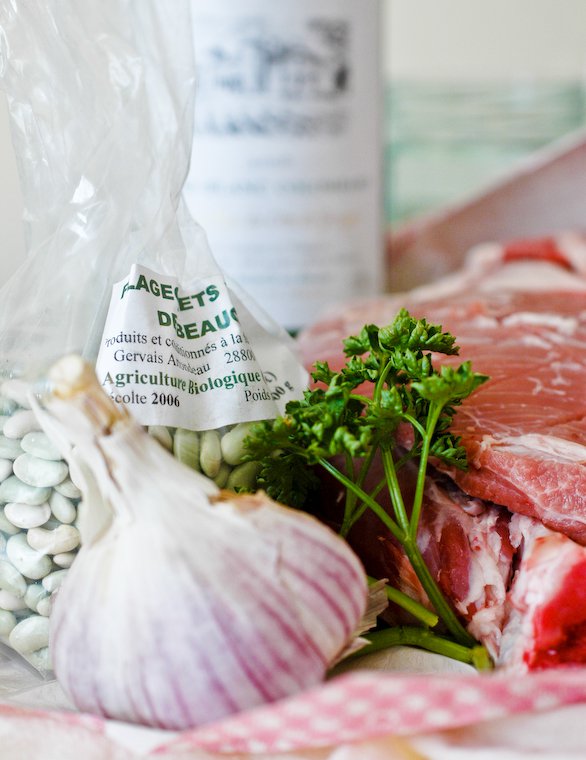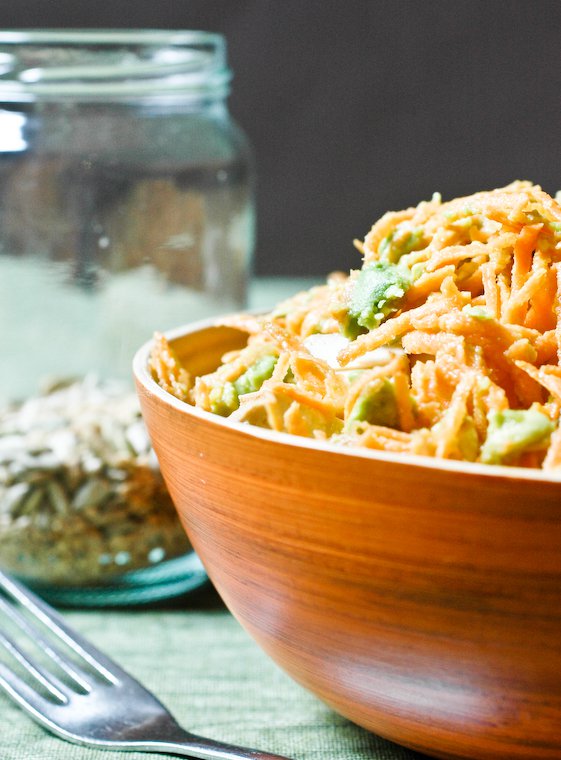As subscribers to the Chocolate & Zucchini newsletter already know, a French publisher has purchased the rights to my very-soon-to-be-published cookbook. And because the tone of writing is very personal, I’ve asked to translate my own words: the recipes themselves are taken care of by a pro, while I translate — and often rewrite — the stories that accompany them and structure the book.
I’m fortunate that my father is now a seasoned translator with plenty of tips to share, but this still represents roughly a month of full-time work, and since my publisher is shooting for a release in the fall, I have not an hour to squander.
I’ve come to depend on quick, tasty, and nutritious salads for my lunches, and I’ve developed an addiction to this carrot and avocado salad, which appears on my menu more frequently than I’d be willing to admit in a court of law.
So my workdays have been unusually intense for the past few weeks — did I mention that the delivery date of my second book is also looming closer by the minute? — and I’ve been sitting at my desk from breakfast till dinner with nary a break. I am not at all complaining, mind you: my desk is comfortable and I am enjoying the stimulating translation work, even if it is causing the seat of language in my brain to wobble a bit.
No. The reason why I’m telling you this is to explain how I’ve come to depend on quick, tasty, and nutritious salads for my lunches. And in particular, I’m afraid I’ve developed an addiction to this carrot and avocado salad, which appears on my menu more frequently than I’d be willing to admit in a court of law.
What can I say? The preparation is effortless (especially if you have a food processor with a grater attachment), you can make a couple of servings at a time and let the second one sit in the fridge until lunch the next day when it will taste even better, and it is so brightly flavored and satisfying that I have to reason with myself not to eat this at every. single. meal, lest I turn into a carrot. Or an avocado, I’m not sure which is worse.
In my defense, I never make this salad in exactly the same way: I use either lemon or orange juice, I throw in fresh herbs — especially cilantro — and shallots if I have them on hand, I use tofu or chicken or a soft-boiled egg depending on what the fridge has to offer, and on a couple of rejoicing occasions I’ve folded sprouted mustard seeds into the salad. But the basic structure, give or take the occasional riff, is outlined below.
Continue reading »








